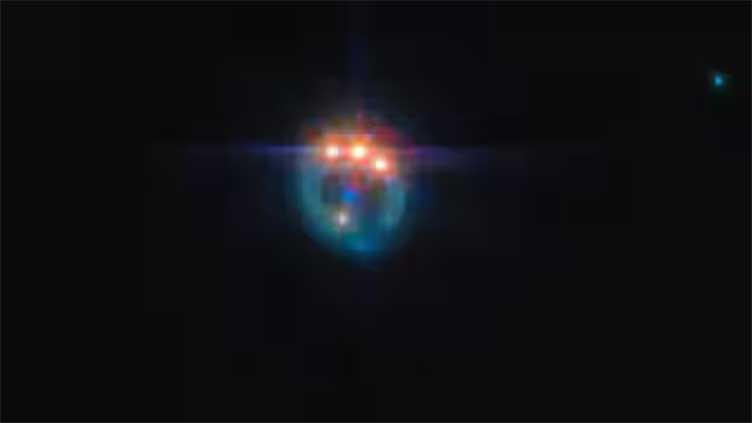Jewelled ring-shaped exoplanet floating 6billion light-years away from Earth discovered

Technology
The exoplanet was captured by the telescope
(Web Desk) - NASA's James Webb Space Telescope has made a magnificent discovery and was able to even capture it for the world to see the mysteries of the cosmos.
An exoplanet, which appeared like a sparkling jewelled ring, was captured by the telescope. The jewelled ring of the exoplanet was found to be a result of a cosmic phenomenon called gravitational lensing.
The exoplanet captured is a distant quasar, which is called RX J1131-1231, and is floating six billion light-years from Earth.
A nearby elliptical galaxy's powerful gravitational field appeared to have warped the light of the quasar, which is an extremely luminous active galactic nucleus (AGN) and formed a bright arc as well as duplicate views of the object, eventually procuring a visual which appeared like gemstones on a ring.
WHAT IS GRAVITATIONAL LENSING?
The James Webb Telescope captured the quasars which are filled with large amounts of gas and dust falling inside the supermassive black hole of the galaxy, which makes the region shine very brightly.
The gravitational lensing occurs when the light from a more distant source is bent by a massive object. Its effects allow astronomers to observe regions close to the black hole part of distant quasars, said the European Space Agency (ESA) in a statement.
In the image, the elliptical galaxy, which led to the gravitational lens, appears as a small blue dot in the centre of the ring.
The galaxy works as a natural telescope which magnifies the light from the more distant quasar.
"If a black hole grows primarily from collisions and mergers between galaxies, it should accumulate material in a stable disc, and the steady supply of new material from the disc should lead to a rapidly spinning black hole," said ESA officials, in the statement.
"On the other hand, if the black hole grew through many small accretion episodes, it would accumulate material from random directions.
Observations have indicated that the black hole in this particular quasar is spinning at over half the speed of light, which suggests that this black hole has grown via mergers, rather than pulling material in from different directions," they added.
JWST's Mid-Infrared Instrument (MIRI) was used to take the image as part of the study being conducted on dark matter and its distribution in the universe.



